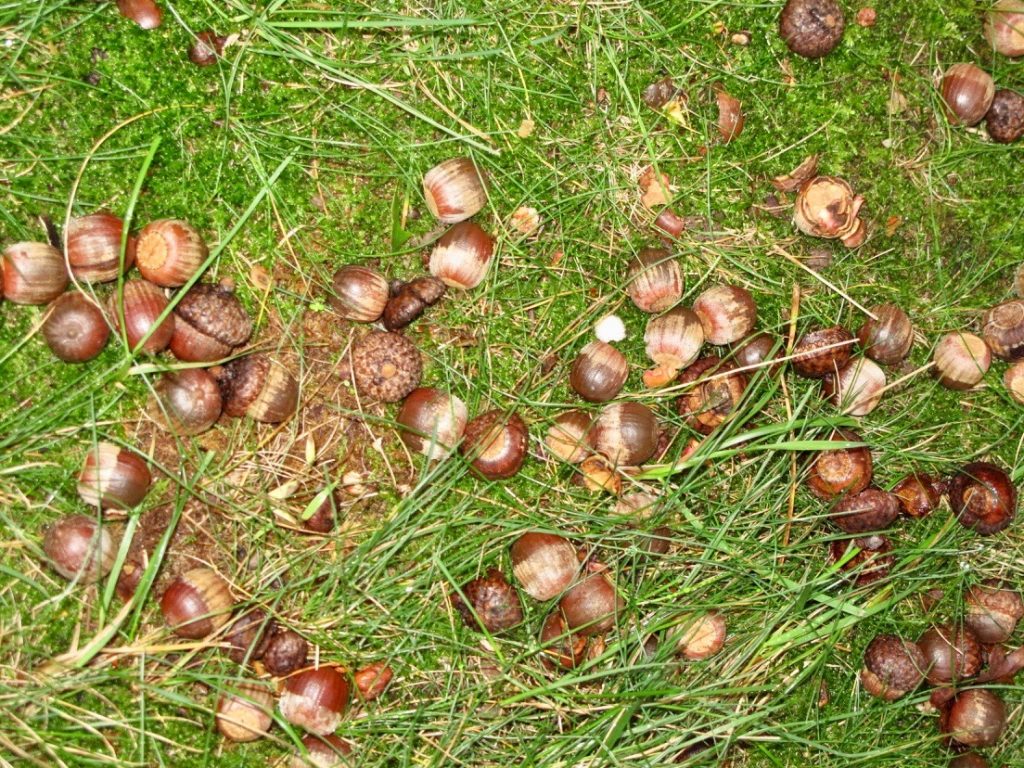
Tuesday, October 27
It was raining, once again, when a dream awoke me at 6:30. It seems to rain every day now—our share of the precipitation related to the hurricane, or tropical storm, named Zeta. (Are they running out of names? Maybe the next will be an Aa name, like Aaron?) Along with the rain, acorns pelt the house—wham! as if some malevolent tree were hurling them, intending to inflict pain on the roof. There’s one every few minutes. Bam! like the report of a rifle. Is the propulsive force really due to gravity alone? Sometimes squirrels throw acorns down, but I don’t think they’d be doing that at this hour when it’s still pretty dark.
In my dream I am at the doctor’s office. He has stepped out of the room for a moment, leaving me there with my mother. “Your friend Walter says you seem to be in pretty good shape,” she comments. Walter? Did I have a friend named Walter who was a doctor in Memphis? I don’t believe so.
There seems to be a bumper crop of acorns this year. I remember a few years back when that also happened, they simply blanketed the yard. Some say that a big crop of acorns portends a rough winter. But the last time there were so many acorns, I don’t think the winter was especially severe.
Can acorns really be used to make coffee? Can’t think where, but I recall reading novels set in wartime or during an economic depression, with references to “acorn coffee.” Searching on Wikipedia, I come across an entry by a Belgian coffee seller, Miko, which says: “One of the ideas which kept the business alive during the [World War II] war years was the decision to start roasting acorns just like coffee beans; it made Miko the creator of ‘Acorn Coffee.’ This bitter, black derivative also known as ‘surrogate coffee’ was drunk in large volumes throughout the war years. To be frank nothing else and better was available.”
I can find no mention of acorn coffee in The Oxford Companion to Food, a voluminous encyclopedia that sits on my shelf largely unread. But it does say that acorns have here and there been eaten, “since prehistoric times.” In Cervantes’ Don Quixote, a duchess asks Sancho Panza’s wife to send her some acorns from her village, probably from the ilex oak, Quercus ilex. Varieties of this tree are cultivated in Spain and Portugal, says Oxford, with its long, cylindrical acorns being comparable to and eaten like chestnuts.
In North America, there are also several native species of palatable acorn that “constituted a food of some importance for Indians and early white settlers.” Acorns of the California black oak had “outstanding flavor and the most gelatin-like consistency when cooked, a prerequisite for good acorn mush,” according a cited work on the Cahuilla Indian use of plants, Temalpakh by Lowell John Bean and Katherine Siva Saubel.
I suggest to Emily that, since we have so many, I might find a way to introduce acorns into our diet. She’s not enthusiastic.
Dinner: Simple potato soup, a small bit of the remaining ropa vieja, and a green salad.
Entertainment: Episodes of Netflix’ Ozark, season two, and more of the increasingly formulaic season six of All Creatures Great and Small.
